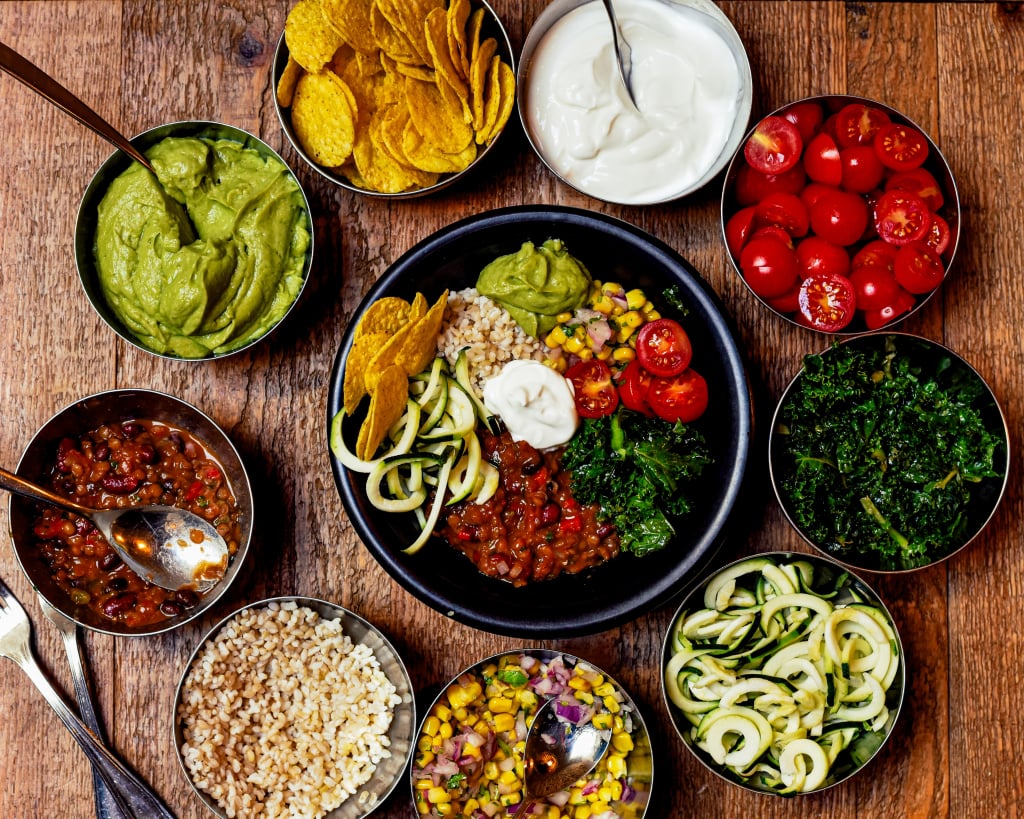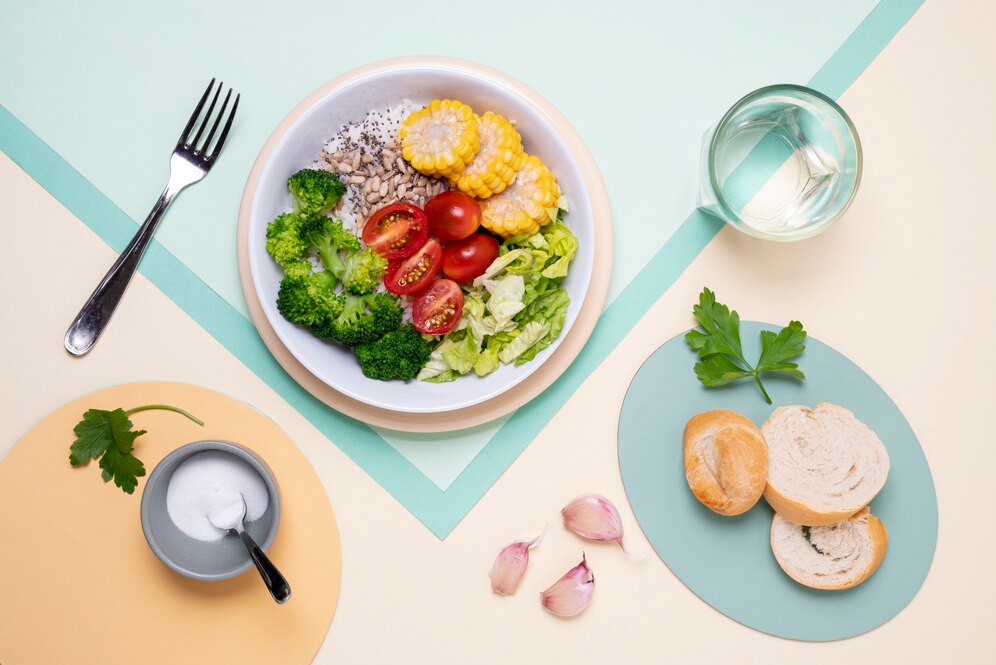The current COVID-19 pandemic highlighted the importance of keeping a healthy immune system. Health experts recommend regular physical activities and eating nutritious food to boost our defense against the virus.
Since the pandemic is far from over, many are still searching for the best diet plans. Some who have already changed their eating habits also plan to maintain their new diets.

According to the World Health Organization, a healthy diet protects people against chronic non-communicable diseases like heart disease, diabetes, and cancer. It specified that a healthy diet covers a combination of foods, including staples, legumes, fruits, and vegetables, and food from animal sources.
On the other hand, an unhealthy diet increases the risk of an individual getting heart disease, type 2 diabetes, cancer, and other obesity-related diseases. The Center for Science in the Public Interest said that an unhealthy diet leads to around 678 000 deaths yearly in the United States alone.
Research and studies on nutrition have been constantly conducted to create diet plans. If you have not found the best diet and healthy foods that work for you yet, or want to explore more diet plans, this blog is for you.
What is a Healthy Diet?

A healthy diet is not about strict limitations, staying unrealistically thin, or depriving yourself of the foods you love. Rather, it’s about following the ultimate guide to healthy eating, which emphasizes well-balanced meals that leave you feeling great, having more energy, improving your health, and boosting your mood.
Healthy eating doesn’t have to be overly complicated. If you feel overwhelmed by all the conflicting nutrition and diet advice out there, you’re not alone. It seems that for every expert who tells you a certain food is good for you, you’ll find another saying exactly the opposite.
The truth is that while some specific foods or nutrients have been shown to have a beneficial effect on mood, it’s your overall dietary pattern that is most important. Healthy eating routines that focus on healthy meals and healthy foods can make a huge difference in how you think, look, and feel.
To eat healthy, it’s essential to include a variety of minimally processed foods such as whole grains, lean proteins, and healthy fats in your diet. Incorporating whole foods like brown rice and fatty fish, which are rich in essential nutrients, can significantly improve your overall health.
Avoiding highly processed foods and unhealthy fats, and opting for nutritious foods, will help maintain a healthy weight and prevent weight gain.
By using these simple tips, you can cut through the confusion and learn how to create—and stick to—a tasty, varied, and nutritious guide to healthy eating that is as good for your mind as it is for your body.
Remember, a healthy eating habit contribute to weight loss, mental health, and overall well-being. Start your journey towards a balanced diet and healthier eating today by following a comprehensive healthy eating plan.
A Word About Diets
Before we dive into the different types of diets, it’s important to note that none of these options are the be-all, end-all for your health needs. To maintain good health and achieve your fitness goals, it’s crucial to practice mindful healthy eating and make healthier food choices.
Practice mindful eating to avoid overeating and to better enjoy your meals. Remember, a balanced diet with the right combination of food groups will help you maintain muscle mass, improve bone health, and keep your blood sugar levels stable.
By following these guidelines, you can achieve and maintain a healthy weight while supporting your overall health and well-being.
Ketogenic Diet

Commonly known for its shortened term “Keto” Diet, Ketogenic Diet cuts carbohydrate intake and replaces it with fat. This very low carb, high fat diet works by putting your body into ketosis, a metabolic state when you reduce carbohydrate intake.
Your reduced consumption of carbohydrates limits your body’s supply of glucose or sugar which serves as the energy source of your cells. When you reach this metabolic state, your body works to burn fat for energy.
What to eat and limit
Keto-friendly food is low-carb, including fish, meat, eggs, seafood, and vegetables. You can also eat natural and healthy fats like olive oil, butter, and sauces for your healthy meals. If you are on a keto diet, you must hold in your sweet tooth and avoid sugary food like cookies, ice cream, and desserts. You must also prevent starch-rich food as starch transforms into sugar. Therefore, bread, potatoes, and rice are not diet-friendly for you.
Types
The Keto Diet Comes In Four Types, But The First Two Are The Only Ones Backed By Extensive Study:
- Standard ketogenic diet: commonly contains 70% fat, 20% protein, and 10% carbohydrates
- High protein ketogenic diet: includes 60% fat, 35% protein, and 5% carbohydrates
- Cyclical ketogenic diet: follows periods of higher carbohydrate intake (e.g., five keto days then two high carb days)
- Targeted ketogenic diet: allows additional carbohydrates consumption around workouts
Pros And Cons
A Keto diet can lead to lesser weight, and you can achieve weight loss faster as your body burns fat. This low-carb diet also helps in several health conditions, including heart disease, as it improves blood pressure and blood sugar, as well as a possible cancer treatment for it helps slow the progress of the tumor. It is further proven to reduce seizures in epileptic children.
However, the keto diet is not recommended for people with high energy requirements like athletes and those with physically-demanding jobs because low-carb and sugar intake results in less energy.
The effect cannot only be felt physically but also mentally. The low carb intake hinders the glucose from entering the bloodstream, thus causing poor brain energy.
Vegan Diet

At least one or two in your circle of friends have gone “meatless.” When you invite them over for a meal, you must ensure that you have plant-based options on your menu.
Veganism became popular in the Philippines, with social media as a venue for the vegan movement. For instance, the group Manila Vegans on Facebook has already surpassed 50 000 members.
Veganism follows a diet that avoids food sourced from animals. Plant-based people are forwarding climate justice, a healthy lifestyle, or both.
What To Eat And Avoid
If you are planning to join your vegan friends, you must include plant-based food in your meals, including fruits and vegetables, nuts, seeds, and legumes. You must do away with animal-based food like beef, meat, fish, processed foods, and eggs and animal-sourced products like dairy and honey.
Types
- Whole-food vegan: involves whole plant foods like fruits and vegetables
- Raw food vegan diet: focuses on raw plant-based food cooked at below 48°C temperatures
- Starch solution: followers eat cooked starches like potatoes and corn
- 80/10/10 diet: low fat, raw food vegan diet which involves more raw greens and fruits
- Raw till 4: followers eat natural foods until 4 p.m. and can include cooked plant-based for dinner
- Thrive diet: also called a raw food vegan diet
- Junk food vegan diet: followers eat processed vegan foods like fries and mock meats
Pros And Cons
According to a study published at the National Library of Medicine, a vegan diet can cut the follower’s risk of chronic diseases and lead to weight loss. It also improves metabolic health and blood pressure.
Its benefits extend to the environment as a meatless lifestyle, forward animal rights, and lead to the reduction of greenhouse gas emissions.
However, following a vegan diet can be difficult, especially if you are in a country crazy for meat and cheese. Without the inclusion of animal-based products, most Filipinos would say their food is tasteless.
Sustaining this diet is challenging as vegan restaurants and dishes are perceived as expensive and sometimes hardly accessible.
Mediterranean Diet

Health experts and dieticians tag this diet as one of the healthiest diets. It follows the diet of people in the Mediterranean region, which includes countries like Spain, Italy, and Greece.
The Mediterranean diet merges nutrition and delight. If you have been wanting to commit to a diet plan but has picky taste buds, this one might work for you.
What To Eat And Limit
If you want to follow this diet, your plate will usually be filled with flavorful fruits like grapes, apples, bananas, and melons; and vegetables like carrots, cucumbers, and tomatoes.
Good news: you are not limited to fresh fruits and vegetables alone but can also eat canned, frozen, minimally processed foods, provided that you check their labels for sodium and sugar content.
You can also enjoy poultry, dairy, whole grains, and legumes. On the other hand, added sugar, highly processed food, and trans fat are off-limits.
Pros And Cons
The Mediterranean diet is the benchmark for nutrition, so you must expect that it brings numerous benefits to your body. It promotes a healthy heart and is thus a recommended diet by the American Heart Association (AHA).
According to AHA, replicating the diet of people from the Mediterranean can help the follower prevent heart disease and stroke.
It further cuts the risk factors of developing high blood pressure, high cholesterol, and diabetes, among others.
Following a Mediterranean diet also helps in mental function. Healthline’s study cited that more adherence to the Mediterranean diet was linked to better memory and lesser risk factors for Alzheimer’s disease among 512 participants.
But like most diet plans, the Mediterranean diet also comes with downsides. MedlinePlus said that following this diet may cause you to lower iron levels and calcium deficiency.
It can also potentially lead to weight gain by allowing healthy fats like nuts. Moreover, MedlinePlus warned against the intake of wine, which is allowed under this diet, especially for pregnant women.
Intermittent Fasting

The most common diet trend is intermittent fasting, an appetite management method that follows an eating pattern. While the first three diets restrict what food to eat, intermittent fasting does not. It only sets when you should eat.
According to Healthline, this health trend typically follows daily 16-hour fasting for 24 hours, twice a week. Here are more fasting types to guide you.
Types
- 5:2 fasting: follows normal eating for five days, then 500 calories a day for women and 600 for men for the other two days
- Overnight fasting: fasting for 12 hours at night daily
- Eat-stop-eat: one or two 24-hour fasts weekly
- Time-restricted fasting: follows an eating window and leaves 14 to 16 hours for fasting.
- Whole-day fasting: eating only once a day. You can follow by eating lunch today and lunch for the next day.
Pros and Cons

Among the most known benefits of intermittent fasting is its positive result in weight management. Rejecting food for a certain fasting period creates a calorie deficit which causes weight loss. One best practice for intermittent fasting is the 1500-calorie diet, which is claimed to be effective in losing excessive weight.
It is also one of the simplest methods to follow, mainly because you have to set a period for eating and fasting instead of counting calories and being mindful of what to eat and avoid.
More than its weight control benefits, intermittent fasting also helps in several health conditions.
First, it impacts insulin resistance and can cut blood sugar levels. Next, its effect on metabolism can potentially lessen a person’s risk of developing cancer. Lastly, it triggers hormone changes and leads to cellular repair.
This method is a health trend, but it does not mean it applies to anyone. Its safety concerns are probably among the most common downsides of intermittent fasting. If you plan to do intermittent fasting, you should consult a healthcare professional first.
Healthline furthers that you cannot immediately commit to intermittent fasting if you are:
- Pregnant or breastfeeding
- A child or adolescent
- Taking medications
- With a history of eating disorders
- Diagnosed with diabetes
Paleo Diet

Coming from the word Paleolithic, Paleo Diet is inspired by the diet plan that people from the Paleolithic Era might have followed.
The prehistoric era dates back from around 2.5 million to 10 000 years ago, and it is impossible to determine what our ancestors consumed. Researchers, however, believe they eat whole foods.
This diet aims to return to the whole-food-based diet, believing that the modern diet is not fitted for the human body.
It also pushes to replace the modern sedentary lifestyle with an active one as the hunter-gatherers did. This way, lifestyle diseases like obesity, diabetes, and heart disease will be avoided.
What To Eat And Avoid
Food included in the Paleo diet include those naturally available like beef, pork, poultry, fish, fruits, and non-starchy vegetables.
If you follow this diet plan, you can also have natural fats like olive oil, flaxseed oil, and walnut oil, but only in moderate amounts.
Meanwhile, processed foods and those which are not available during the prehistoric time are a no-no. You might avoid dairy products, grains including pasta, artificial sweeteners, legumes, and processed meat.
Types
- Basic paleo: rejects grains, dairy, soy, and other processed foods
- 80/20 paleo: eating 80 percent Paleo-friendly food and 20 percent for non-Paleo food
- Pegan: Paleo and Vegan diets in one. It follows Paleo principles and excludes animal-based food
- Ketogenic Paleo: includes low-carb Paleo-friendly food
Pros And Cons
Paleo-friendly food consists of fruits and vegetables, giving you essential nutrients. It also cuts your dependence on white refined carbohydrates.
In addition, the Paleo diet is also unique in that it emphasizes the inclusion of exercise in achieving a healthy lifestyle. Yet, the effectiveness of this diet has minimal scientific evidence.
While the Paleo diet is one of the few that emphasizes exercise as a key factor to achieving a healthy lifestyle, it is general knowledge that physical activity is vital whether you follow a particular diet plan. This is why the demand for communities encouraging homeowners to move and sweat is rising.
Your plan to lose weight should never stop you from having a balanced diet. Healthy dietary patterns are more than just avoiding processed meats and saturated fat.
In fact, going exclusive on brown rice, lean meats, and fruit juice is not always healthy.
Achieve a Healthy Lifestyle with Camella Homes
House and lot developments by Camella Homes, the leading housing brand in the Philippines, come with amenities that promote a healthy mind and body among its residents.
Every Camella community has accessible swimming pools, basketball courts, and jogging trails where homeowners can stretch and release stress.
Health and wellness are also the priority inside Camella Homes with its healthy home offerings. These healthier sanctuaries are spacious, smart, and eco-friendly to answer every homeowner’s needs.
Maintaining good health involves not only physical activities but also making mindful eating choices. Opt for a diet rich in fruits, vegetables, whole grains, and low-fat dairy products to support bone health and prevent weight gain.
By making healthier food choices and avoiding unhealthy fats and food options like fast foods, sugary beverages, and packaged foods, you can achieve and maintain a healthy weight.
Incorporate more starchy vegetables, low-fat dairy, and a lean protein into your meals, and remember to avoid sugary drinks and processed meats, which can negatively impact your heart health and blood sugar levels.
Promoting weight loss involves not just counting calories but also ensuring that half your plate consists of fruits and vegetables. Frozen fruits and a variety of food groups provide certain nutrients essential for overall well-being.
To lose weight and keep it off, practice mindful eating to avoid consuming too many calories and unhealthy food choices.
Don’t miss out on the latest health trend! While you look for the best diet that works for you, start the hunt for a house and lot in the Philippines that will support your healthy lifestyle.
Camella Homes is your ultimate guide to a balanced life, offering the perfect environment for a healthy and fulfilling lifestyle.
Live A Healthy Life in Camella in Iloilo

Camella Homes, committed to maintaining the wellness of its homeowners, has positioned its communities near key establishments, including those related to a healthy diet.
Living in a Camella community will not disappoint you if you are a strict vegan or planning to be one. Aside from its proximity to markets where you can source fresh fruits and vegetables, Camella communities are also accessible to vegan restaurants.
Camella Savannah in Iloilo City is one of the proofs. This master-planned community puts homeowners at the center of their life needs. In just 15 minutes, you can drive from your Camella home to Monkey Grounds Coffee, a 100 percent vegetarian coffee shop famous in Iloilo City.
You can find more restaurants serving plant-based cuisine around the city, like NutriVege, which you can reach in less than a 30-minute drive from your Camella home.

Celebrate Life’s Milestones in Camella!
Make unforgettable memories in a Camella home.
Our communities are designed to elevate your living experience.

